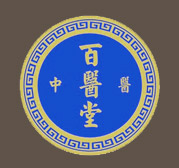TRADITIONAL CHINESE MEDICINE

TCM's view of the body places little emphasis on anatomical structures, but is mainly concerned with the identification of functional entities (which regulate digestion, breathing, aging etc.). While health is perceived as harmonious interaction of these entities and the outside world, disease is interpreted as a disharmony in interaction.
TCM diagnosis aims to trace symptoms to patterns of an underlying disharmony, by measuring the pulse, inspecting the tongue, skin, and eyes, and looking at the eating and sleeping habits of the person as well as many other things.
TCM TREATMENTS
- PER HOUR All TCM are $65/hourYou can combine 2~3 treatments in one section
All prices include GST. The full private fee will be charged if you cancel with less than 24 hours’ notice.
ACUPUNCTURE

Acupuncture therapy treats patients based on the theories of the zang-fu organs, and the energetic meridians that link them in the human body. It employs the fourfold stages of clinical diagnosis, and the eight principles of differentiation, to arrive at a treatment. Through this analytical process and summation, for different clinical conditions, a precise determination of pathology and pathogenesis, and the nature and location of the pathogen, may be made. The illness may be located in the fu or the zang organs, at the surface, or in the interior; the nature of the illness may be either that of hot or cold, and deficient or excess. Through differential diagnosis, a treatment formula may then be made, either tonifying or reducing, through the meridians, regulating the qi and blood, in order to achieve a balance between the yin and the yang, to achieve the therapeutic aim.
Speaking more specifically, acupuncture uses the acupoints to achieve its treatment results. Acupuncture stresses the need to “obtain the qi,” which is felt by the patient as numbing, soreness, heaviness, and distention. Needles are usually retained for 20 to 30 minutes. During retention, the needles are manipulated.
ACUPRESSURE

Acupressure is a Chinese medical therapy with various manipulations applied to certain location of the human body (including specified passive movement of the limbs) to prevent disease . One of its chief curative factors is the quality of the manipulation and the other factor is the exceptional effect of the manipulated locations, channels and collaterals , and points. The chief acting principle are as follows: (1) regulating yin and yang (2) regulating the function of channels and collaterals, qi and blood , and viscrera (3) recovery of the function of tendons, bones and joints (4) the tonifying and purging function of massage manipulation . Common –used manipulations including : pushing manipulation with one-finger meditation ; rolling manipulation ; kneading manipulation ;rubbing manipulation , grasping manipulation ; pressing manipulation ; tapping manipulation ;shaking manipulation etc.
CUPPING

Cupping is a therapy in which a jar is attached to the skin surface using negative pressure created by different means of suction. This pressure brings blood to the surface of the skin below the cup, allowing pathogens to leave the body through the opened pores, while promoting blood circulation in the tissues and organs below.
GUASHA

Also known as scraping therapy, this method involves using the smooth edge of a tool, usually made from ceramics, wood, or water buffalo horn. The skin is first covered with a massage oil, and the area is repeatedly scraped until red, occasionally with slight bleeding. It improves local circulation, dispels fever, treats abdominal cold and heat with dampness, reduces swelling and pain, and boosts the body’s immunity.
MOXIBUSTION

Moxibustion is paired with the acupuncture needles as an equally broad and clinically effective method, but not as well-known in the West. It is often used in cases where patients are too weak to receive either acupuncture or herbal medicine due to their stimulating properties. Moxibustion, like acupuncture, uses the acupoints and meridians to treat illness, but applies the heat of burning moxa (or mugwort, Artemisia vulgaris). Other herbs are also used in moxibustion, but mugwort (ai ye, in Chinese) is the most common.
There are various methods used in moxibustion. Direct moxibustion involves placing moxa cones directly at the acupoints on the skin. Indirection moxibustion employs another medical agent, such as a slice of ginger, garlic, or the herbs, between the moxa cone and the skin. A moxa roll or stick may also be used, held in one hand, and applying heat at a distance from the acupoints. Finally, moxa may be pressed into small pieces and inserted at the head of the inserted acupuncture needles, and burned to allow the heat to travel inside the needles.
FOOT MASSAGE

To synchronize your body and mind and strengthen your vital forces our therapist will apply the necessary potency of electrical energy to the pressure points on your feet to relieve pain and stress for your vitality.
The benefit of a foot massage utilizes the points at the foot nerves that connect to other parts of your body. Nerves communicate with all of your body—muscles, tendons, joints, organs, and all of your being. Your tired and aching feet from working, standing, or walking become tired and you feel tired and worn out everywhere—including how you think. You become so sick of being sick in pain that you want instant relief. When your feet are thoroughly massaged, you will feel good all over.
